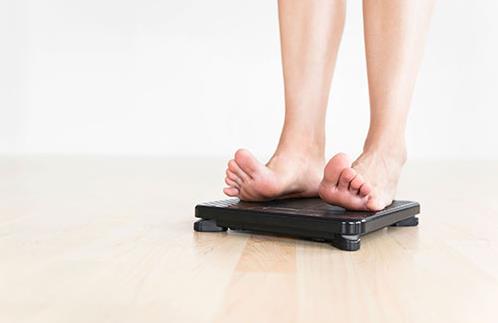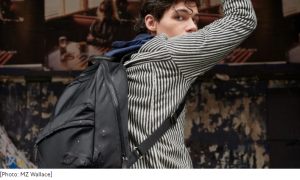美国一项初步临床研究显示,冷冻向大脑发送饥饿信号的神经从而降低信号传递强度,可能有助于肥胖症患者减肥。埃默里大学医学院介入放射学的研究团队在美国介入放射学会2018年会上公布了研究成果。他们的初步研究表明,这种减肥疗法安全可行。
Weight loss can sometimes seem impossible because even after hard-won success, the pounds can creep back.
减肥有时似乎是不可能的任务,因为即使好不容易瘦身成功,也可能出现反弹。
“Ninety-five percent of people who embark on a diet on their own will fail or gain their weight back at the six- or 12-month mark,” Dr. David Prologo, an interventional radiologist at Emory University School of Medicine in Atlanta, said in a news release video. “The reason for this is the body’s backlash to the calorie restriction."
亚特兰大州埃默里大学医学院介入放射学专家大卫•普罗洛戈在一段新闻视频中称:“95%依靠节食自己减肥的人都失败了,或在6到12个月时出现反弹。这是因为人体对限制卡路里摄入出现了强烈反应。”
Prologo recently conducted a trial that looked deeper into the issue, targeting the "hunger nerve" and its possible connection to one's ability to lose weight and keep it off.
普罗洛戈最近进行了一次试验,深入研究这个问题,把研究对象对准“饥饿神经”及其与人体减肥和维持体重的能力之间可能存在的关联。

The “hunger nerve” -- also known as the posterior vagal trunk -- is a branch of the larger vagus nerve that works on the heart, lungs and GI system. When your stomach is empty, the nerve signals your brain that you're hungry.
“饥饿神经”,又称迷走神经后干,是大迷走神经的一个分支,影响心脏、肺和胃肠系统。当你的肚子里没有东西时,“饥饿神经”会告诉大脑你饿了。
那么我们可以通过冷冻“饥饿神经”,降低信号传递强度,从而帮助肥胖症患者减肥吗?
普罗洛戈和他的团队进行了一次小型试验,他们将探针刺入实验对象的背部,在CT技术的引导下,用氩气冷冻“饥饿神经”。
By freezing the nerve, the hunger signal was shut down.
通过冷冻神经,饥饿信号被关闭。
The experiment was meant solely to test the safety of the procedure, and the team ran the study on only 10 people. All were overweight, between the ages of 27 to 66 and had body mass indexes (BMIs) ranging from 30 and 37 (those stretch from "moderately" to "severely" obese). Eight of the 10 participants were women.
这个实验仅仅是为了检验这项手术的安全性,研究对象只有10人,其中8人是女性。他们的年龄在27岁到66岁之间,身体质量指数在30到37之间(从“轻微”肥胖到“严重”肥胖),所有人都超重。
注:身体质量指数是衡量人体胖瘦程度的一个常用指标,其计算方法是体重(千克)除以身高(米)的平方,通常认为数值30及以上为肥胖。
At the end of the procedure, the probe was removed and a small bandage was applied to the skin, with patients going home the same day.
手术结束时,探针会被取出,在皮肤上贴一条小绷带,患者当天就可以回家。
The researchers saw the patients again seven, 45 and 90 days after the procedure. Because it was a phase 1 trial, primarily looking for negative side effects, the technical success rate was 100 percent, there were no procedure-related complications and no adverse events on which to follow up.
研究人员在手术后7天、45天和90天再次观察患者。由于这是一个初步试验,主要是为了研究冷冻神经的副作用,技术成功率为100%,没有出现与手术相关的并发症,也没有后续的不良反应。
Though they weren't really looking at weight effects at this stage, patients said they had a decreased appetite at each clinic appointment, and there was an average weight loss of 3.6 percent. Additionally, all of the participants' BMI numbers came down about 13.9 percent. There was no mention of how long any effects on the nerve might last.
虽然研究人员在这一阶段并没有真正研究冷冻神经对体重的影响,但每次诊疗时,患者都表示食欲有所下降,而他们的平均体重减轻了3.6%。此外,所有参与者的身体质量指数下降了约13.9%。研究并没有提及“冷冻神经”的影响可能持续多久。
It is far from proven that freezing the nerve will result in permanent weight loss but if it does, it could have a profound effect on the lives of those who have struggled to maintain a healthy weight.
该研究还远远没有证明,冻结神经能永久性减轻体重,但如果真是这样,它可能对那些艰难维持健康体重的人产生深远影响。







